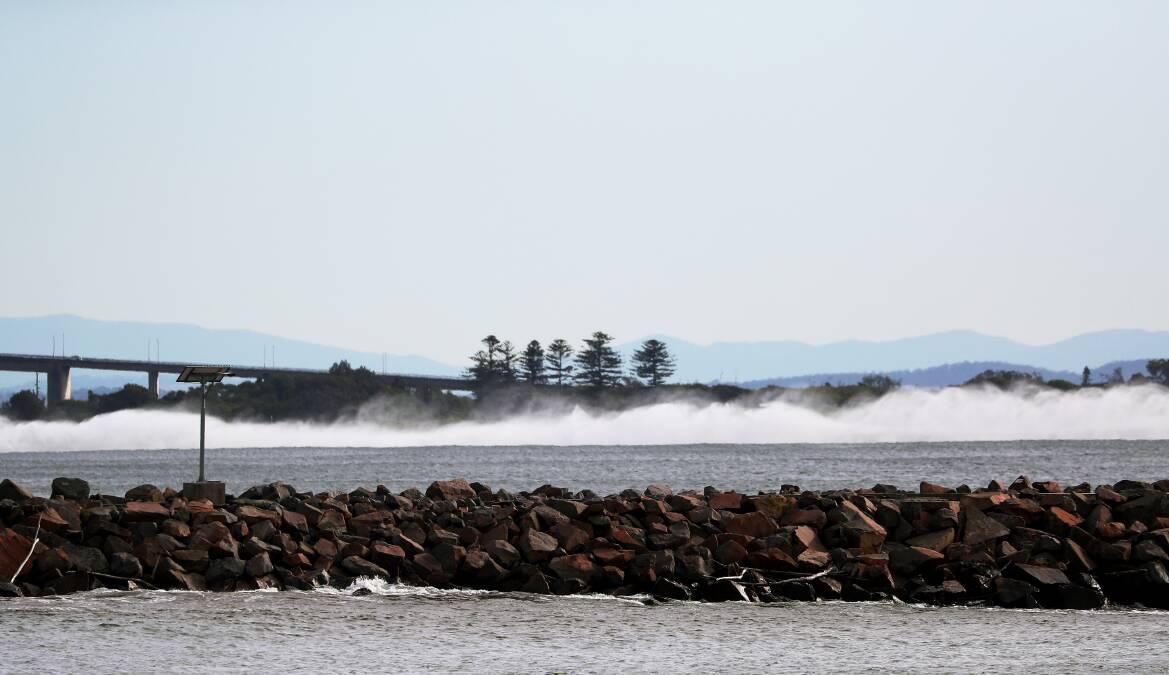
Newcastle broke national air pollution standards more often than any other region in the state last year, but the NSW Planning Department says the high readings were due mainly to airborne sea salt.
The 2023 Annual Air Quality Statement, which was published on Wednesday, shows Stockton broke the national daily average coarse-particle pollution standard of 50 micrograms per cubic metre on 54 days last year.
The seaside suburb was the only air monitoring station in NSW to exceed both the annual average coarse-particle standard of 25 micrograms per cubic metre and the fine-particle standard of 8 micrograms.
Stockton's annual averages were 34 micrograms for coarse particles and 9.3 micrograms for fine particles, a result the department put down largely to sea salt, though industrial pollution also was a factor.
"Sea salt was a primary contributor on 51 or 94% of days, and the remaining 3 days were primarily industry-influenced," the report says.
The Stockton air-monitoring station is 300 metres from the ocean and 20 metres from the Hunter River.
"This proximity often results in Stockton recording the highest number of days exceeding the PM10 benchmark across the NSW air quality monitoring network," the report says.
"Sea salt as PM10 is observed at Stockton when onshore north-easterly to south-easterly winds dominate, especially during the warmer months of October to March."
The suburb exceeded the daily coarse-particle standard almost eight times more often than the next-placed area on the report's list, Kembla Grange in Wollongong.
The report treats Stockton as a special case because of its exposure to sea salt, excluding it from some of its analysis.
The Warkworth air monitor, which is close to an Upper Hunter mine, also exceeded the annual coarse-particle average standard with 33 micrograms.
"Warkworth recorded most days (42) over the PM10 daily benchmark in the [Upper Hunter] region, a significant increase from one day during 2022," the report says.
"Mount Thorley recorded 18 days exceeding the benchmark in 2023, compared with zero days in 2022.
"That the increase in PM10 exceedances was largely restricted to these 2 stations reflects a combination of mining activity together with dryer conditions related to El Nino."
Coarse-particle pollution rose 40 per cent across the 14 air monitoring stations in the Upper Hunter in 2023 compared with the previous year, though all but Warkworth remained below the national standard.
"Across the 14 Upper Hunter stations, there were 49 days when daily average PM10 levels were over the benchmark in 2023. In 2022, there were 2 days at 2 stations," the report says.
"There were widespread particle events in the latter half of 2023.
"The highest daily average PM10 level of 94 micrograms per cubic metre was recorded at Warkworth on 19 September 2023, during a regional dust event when 3 stations exceeded the benchmark."
The report attributes some of the high readings to dry weather and dust.
Most monitoring stations across the Hunter recorded fine- and coarse-particle annual averages below the national standard, and two "regions", Lake Macquarie and Lower Hunter, were among four in the state to meet pollution standards every day of the year.
Carrington recorded an annual average of 23 micrograms for coarse particles, the highest in the state except for Stockton and the mining area monitors.
The Carrington annual average was four micrograms higher than in 2022.
The report says the Carrington monitoring station recorded 63 micrograms per cubic metre on September 19 and 20 last year and also exceeded the daily standard on March 6 and September 18.
Wallsend had the Hunter's lowest average annual fine-particle pollution at 6.1 micrograms.







